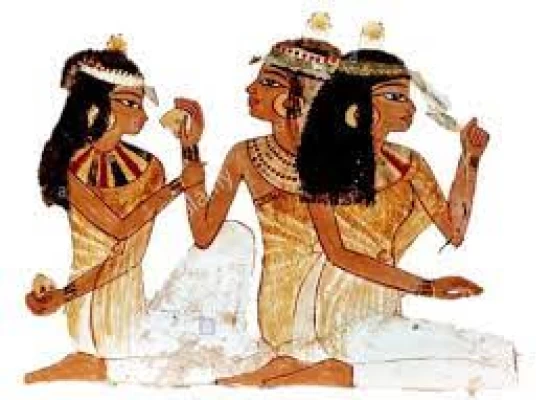
Cosmetics and Make Up in Ancient Egypt
Egyptian Makeup female
The cosmetic industry has experienced various movements both natural and synthetic since time immemorial. For females of the ancient Egyptian times, use of cosmetics went beyond the beauty concept, as it was an embodiment of make-up. The ancient Egyptians perceived beauty in a more elevating, safe and decorative way when it came to the use of cosmetics. From the various elements found in nature, they were able to produce a wide range of organic colored substances. Learn about the make-up wear in the ancient civilization of Egypt.
Make-up has its roots in history as far back as Ancient Egypt, approximately 4,000 B.C. Initially it served some religious purpose – for instance, during mortuary practices, it was utilized in the process of embalming. It was believed that the dead should be preserved as clean and young looking as possible since they would be resurrected to join the gods. In fact, one would often encounter such tombs containing various cosmeceuticals kohl, oil, ointments, combs, tweezers, mirrors and the like in wicker baskets.
The first civilization in history to employ makeup to enhance the appearance of the face and body was the Egyptian civilization. The physical attractiveness and cleanliness of their bodies were highly valued by the Egyptians. They were unique among ancient people in that they shaved their entire body and protected their skin with scented oil. They created their own goods and have extensive understanding of cosmetic chemistry.
Ancient Egyptian makeup tools
The Egyptians had extraordinary expertise in creating natural cosmetics. Oils were made from vegetable fat (olive oil, palm oil, walnut oil, etc.) as well as animal fat from hippopotamus or crocodile. To preserve their beauty products, they added resins with antioxidant properties.
They also invented eyeshadow and blush, which they obtained from a mixture of plants, oils and minerals. Make-up played an important role in Egyptian culture. They used a variety of pigments to adorn their faces. Like Cleopatra, the Egyptians drew the outline of their eyes in black using mesmedet to emphasise the eyes. Mesmedet is a lead ore powder derived from galena, the ancestor of kohl. According to them, it had rejuvenating and anti-wrinkle properties.
Egypt is a hot country with a dry, sandy climate, but particularly humid on the banks of the Nile. Cosmetic products protected Egyptians from the wind, sand, sun, heat and mosquitoes. Kohl had antibacterial properties that helped to combat eye diseases. It also provided protection for the retina from the harsh glare of the African sun. Eye cosmetics were considered by the ancient Egyptians to be a powerful amulet against the evil eye's threats.
A spiritual belief
The ancient Egyptians held a strong conviction about the existence of life after death. Therefore, it became a matter of utmost necessity for them to ensure that their physical views were great enough to be accepted by the afterlife. The dead were dressed up, embalmed and kept inside a coffin – a particular type of case whose primary purpose was to ensure that the body of the deceased was preserved as much as possible. The use of other forms of cosmetics such as make-up was for hygienic use in the sense that it helped keep flies and other insects away.
Ancient Egyptian makeup palette
Egyptian women often wore eye shadow in shades of gold, turquoise or green, reminiscent of the colour of Osiris. Eyeshadow was copper-based, derived from mineral stones such as malachite. Women used red ochre or crushed haematite stone to colour their cheekbones and lips.
The Egyptians liked to take care of their appearance with accessories and jewellery. They had wigs carved from beeswax to protect themselves from lice and heat. He dyed his nails with henna and used perfume to ward off evil spirits. Kyphi was Egypt's most famous perfume. It contained 27 natural ingredients including cinnamon, honey, lotus, flax, myrrh and sandalwood.















